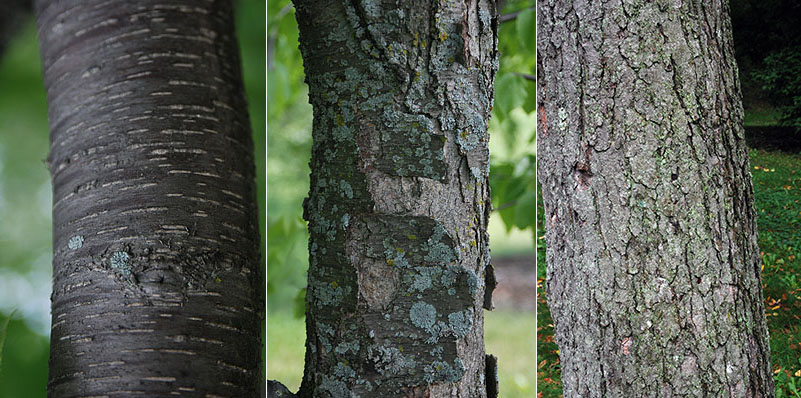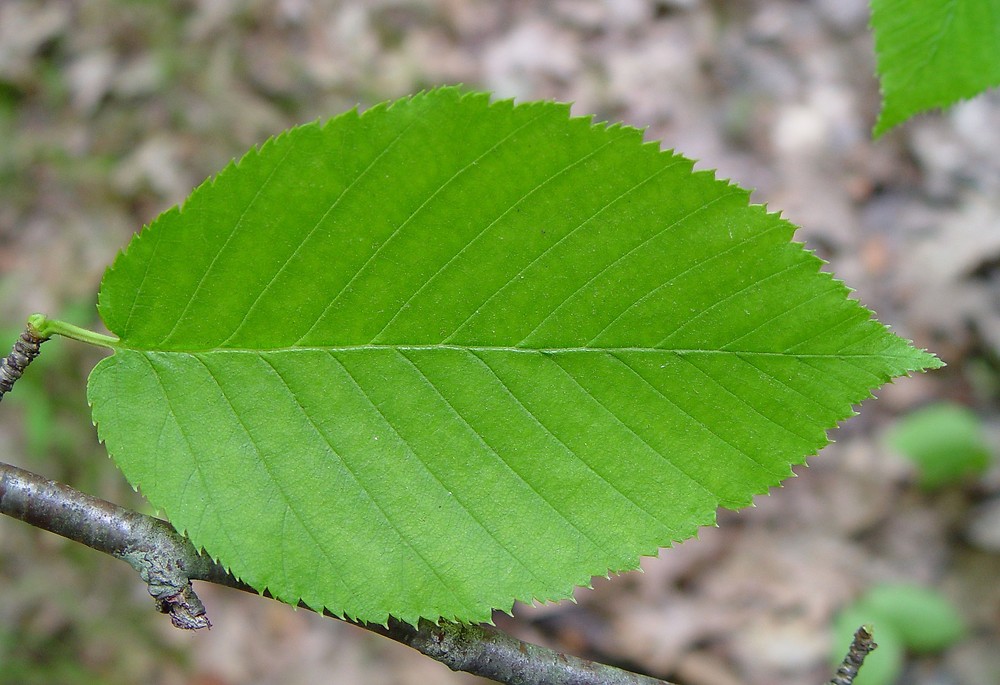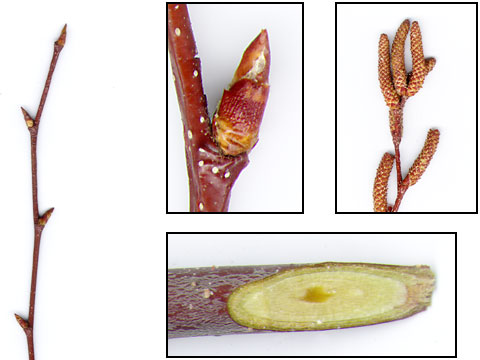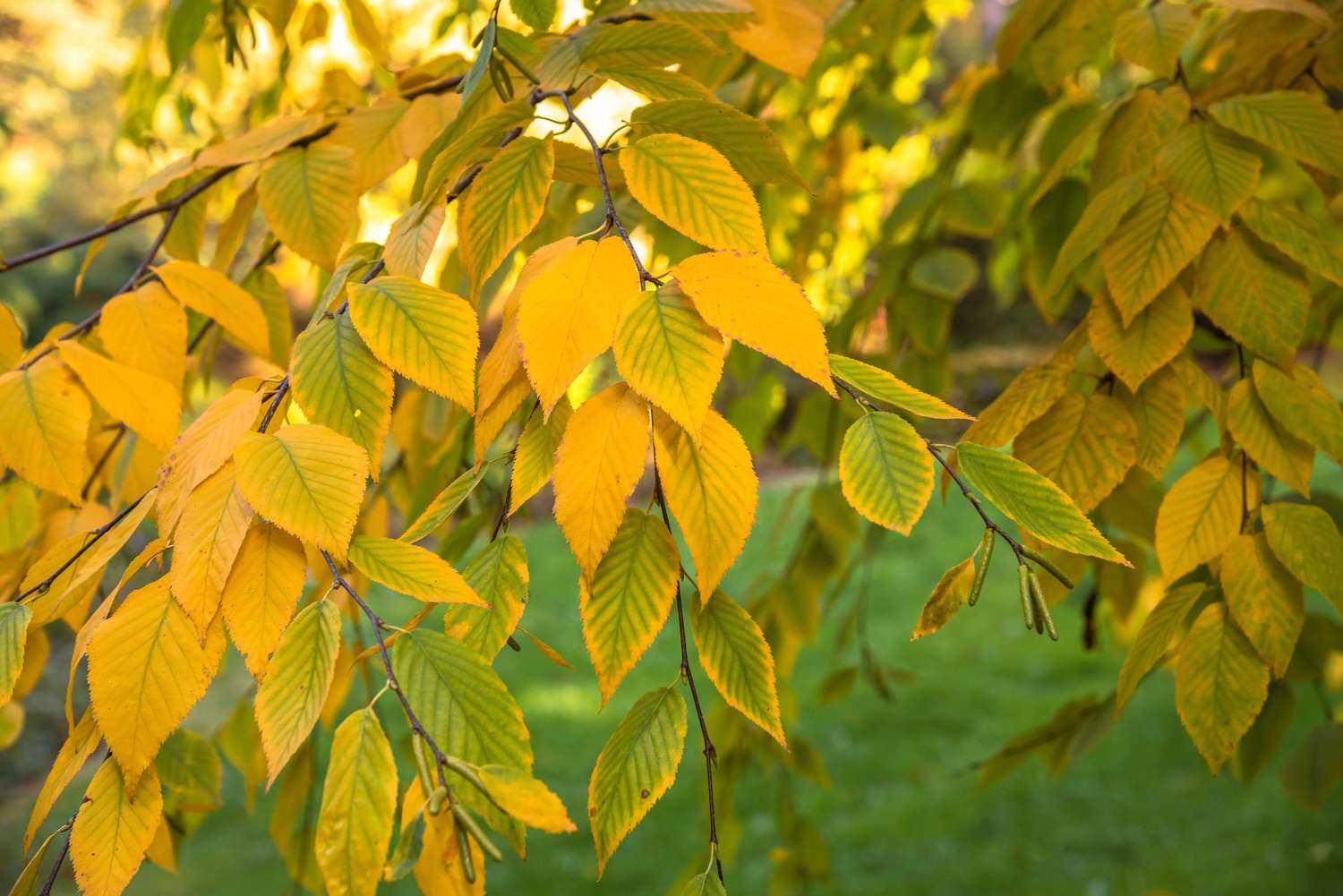Betula lenta


Commonly known as the sweet or black birch, Betula lenta, is native to the Eastern United States and can be found throughout the Appalachian Mountains, including in Massachusetts.1 This tree is identifiable by the horizontal striations of its bark, characteristic of immature birch trees, but as they age the bark becomes a dark reddish-brown with additional vertical cracks.1 Its leaves have teeth-like edges and give off a pleasant wintergreen smell.
Medicinal Uses

The bark of this tree is particularly potent, used as an antiseptic, an astringent, and an antipyretic.1 According to Dr. Stephen West Williams,2 it is also used as a diuretic and stimulant, good for treating colds. When turned into a tea, it is used for treating obstructions and bowel disorders; native medicinal practice used this tea to treat stomach pain.2 To harvest the bark of this tree to make the tea, it is best to use juvenile twigs. When the outer bark is scraped, it should reveal a strong wintergreen scent that can be attributed to the methyl salicylate found in this tree.3 4 The medicinal part of the bark, a layer of green cambium, is found attached to the scraped-off bark. There are no negative properties of this outer bark, so the two can be kept together. Preparing the tea mentioned by Dr. Williams in his herbarium is as simple as boiling the twigs in water and drinking the resultant steeped liquid!2, 4 Interestingly, this tree also produces a sap that can be tapped which can be used to make beer or sugar!3, 4
Indigenous Importance
Unfortunately, the pleasant wintergreen smell led to this tree being overused and its population nearly destroyed by colonizers who sought to extract the methyl salicylate for commercial use.3 This tree is very important for indigenous peoples, particularly the Ojibwe peoples who do not harvest it without acknowledging its importance and extending gratitude to the spirits that give it.5 In fact, in the Ojibwe legend, Winabojo and the Birch Tree, the respect and value placed on this tree is described as how its notable striations came to be. In addition to its medicinal uses, Ojibwe peoples harvest the bark for building baskets, canoes, houses, and other crafts because of its waterproof nature.
References
- Krochmal, Arnold, et al. A Guide to Medicinal Plants of Appalachia. U.S. Forest Service; for Sale by the Supt. of Docs., U.S. Govt. Print. Off, 1971. pp. 76-77 ↩︎
- Williams, Stephen W. Report on the Indigenous Medical Botany of Massachusetts, 1849. pp. 30 ↩︎
- “Sweet Birch.” National Parks Service, U.S. Department of the Interior, www.nps.gov/shen/learn/nature/sweet_birch.htm. Accessed 5 May 2024. ↩︎
- Wiggington, Eliot. Foxfire 2. Anchor Books, 1973. pp. 52-53 ↩︎
- “Winabojo and the Birch Tree.” NativeTech, www.nativetech.org/brchbark/winabojo.htm. Accessed 5 May 2024. ↩︎
